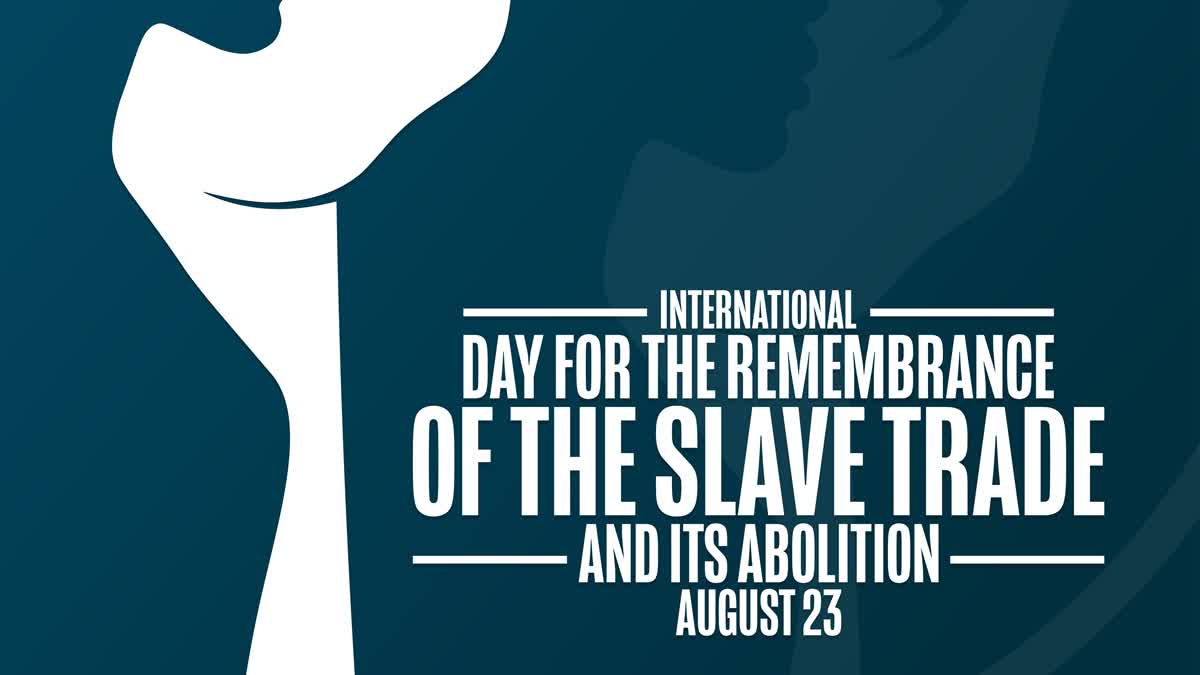Hyderabad: Each year, August 23 is recognized globally as the International Day for the Remembrance of the Slave Trade and its Abolition. This day serves as a moment to honor the tragic history of the millions of innocent individuals who suffered under the transatlantic slave trade during the era of colonial governance. On this occasion, numerous cultural events and discussions are held worldwide.
Slave Trade:
During the era of empires, racist beliefs were used to support unfair political, social, and economic activities, aiding these empires to grow their economies. The slave trade, a byproduct of this racism, resulted from these imperial ambitions. In India, the indentured slave trade began in 1834 and ended in 1922, leading to a significant diaspora with a mix of Indo-Caribbean, Indo-African, and Indo-Malaysian heritage today residing in various Caribbean islands, Fiji, Réunion, Natal, Mauritius, Malaysia, and more.
The significance of this day was initially acknowledged by UNESCO. The slave trade was a widespread practice among the imperialist regimes of European countries. People from Africa and Asia were traded as slaves to serve the colonial powers in Haiti, the Caribbean, and various other regions worldwide. The global slave trade was finally abolished in the year 1807. The first anniversary of the uprising was celebrated in 1998, recognized by UNESCO and also in Senegal the following year.
History Behind The Day:
The history of the day begins on the night of August 22 to 23, 1791, in Saint Domingue, Republic of Haiti. On that exact day on the island of Saint Domingue, today known as Haiti, a revolt erupted, sparking events that led to the end of the transatlantic slave trade.
The importance of this day stems from the end of the transatlantic slave trade. The day was first observed on August 23, 1998, in Haiti, and August 23, 1999, on Goree Island in Senegal.
Since its launch in 1994, the UNESCO "Routes of Enslaved Peoples: Resistance, Liberty and Heritage" Programme has contributed to the production of innovative knowledge, the development of high-level scientific networks and the support of memory initiatives on the theme of slavery, its abolition and the resistance it generated.
At the international level, the programme has thus played a major role in "breaking" the silence surrounding the history of slavery and placing this tragedy that has shaped the modern world in the universal memory. In 2024, the Routes of Enslaved Peoples Programme will celebrate its 30th anniversary.
Modern slavery in India:
Modern slavery in India takes various forms. Today, slavery can take numerous forms, including forced labor, sex trafficking, forced marriage, and child exploitation. Other sorts, such as medical testing and organ harvesting, exist specifically in India. Forced labor and sex trafficking are the most common types of slavery; nevertheless, one type of slavery sometimes overlaps with another in some capacity. Sexual exploitation of children, for example, is common in India's forced labor industry.
Modern slavery in India feels far from modern. Slavery remains deeply rooted in the country's ancient caste structure, instilling socioeconomic differences and neglect of lower castes from birth. Untouchables, India's lowest caste, are esteemed less than cows in their society.
In The World:
India has the most slaves in the world. This is due in part to India's status as one of the world's two most populated countries, as well as the prevalence of all types of contemporary slavery in the country, such as forced child labor, forced marriage, commercial sexual exploitation, bonded labor, and forced recruitment into armed groups.
China, the world's most populated country, has the second biggest number of slaves, with about 3.8 million. While China does not demonstrate the multiplicity of slavery. Other nations with large slave populations include Russia, Nigeria, the Democratic Republic of the Congo, Indonesia, Egypt, Myanmar, Iran, Turkey, and Sudan.
Key Figures Who Worked to End Slavery:
Many well-known personalities are recognized for bringing an end to slavery.
In the United Kingdom, MP William Wilberforce is well-known for his role in taking the fight to Parliament and securing laws to end the slave trade.
However, many slaves and former slaves took action to fight for freedom, not only for themselves, but also to have an impact in other countries.
Here are some of the key figures that helped bring an end to slavery in different parts of the world: Toussaint L'Ouverture, James Somerset, Mary Prince, Frederick Douglas, Harriet Tubman, Olaudah Equiano etc.




